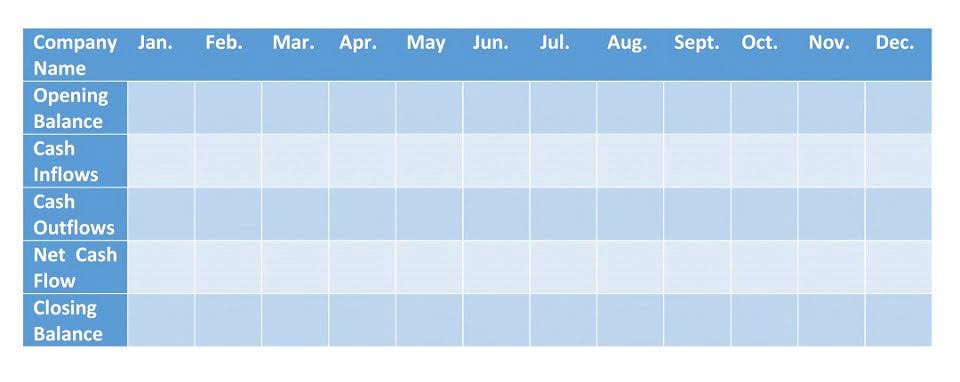
By accurately forecasting demand, grocery stores can make informed decisions about product ordering, stocking levels, and replenishment strategies. This helps to minimize stockouts, reduce excess inventory, and improve overall operational efficiency. By leveraging barcode technology, RFID technology, and inventory management software, grocery stores can effectively track and manage their inventory, reduce stockouts, and improve overall operational efficiency. These tools provide the necessary infrastructure to optimize inventory control and ensure that the right products are available to meet customer demands.

#1: Real-Time Inventory Tracking
Additionally, you must have a bird’s-eye view of customer preferences and market trends to make accurate forecasts and stock the right products at the right time. An optimized inventory system can help fulfill customer orders on time, grocery store accounting reduce food waste, and save costs by preventing understocking and overstocking. Plus, it offers insights into the store’s functionality, so you can identify popular items, slow-moving goods, and trends in customer behavior.
Lightspeed Retail
The data insights also set the foundation for putting other best practices into action. By calculating the EOQ, grocery stores can strike a balance between carrying too much inventory, which ties up capital, and carrying too little inventory, which may result in stockouts. The EOQ formula considers variables such as the cost of placing an order, the cost of holding inventory, and the demand rate of the product. Our intuitive data reporting capabilities empower you to view store performance, and compare date ranges to understand performance trends and seasonality. Our POS system also calculates shrinkage based on items received and sold and previous inventory counts, and our low-stock feature helps you stay one step ahead of your shelves. Their POS system, Catapult, delivers efficient inventory tracking, demand forecasting, and automated replenishment functions.
Grocery Retail Inventory Management Best Practices
- In this guide, we’ll walk you through some best practices to help you improve how you manage your inventory.
- Ultimately, the robust data analytics an inventory management system provides can transform conventional inventory management and make it a more efficient, accurate, and data-driven process.
- Epos Now also offers integrations for enhancing customer shopping options, online store creation, and seamless accounting integration.
- One example of automation in grocery inventory control is the use of Point of Sale (POS) software.
- We appreciate that this software is highly customizable and intuitive, especially if you have experience as a cashier, a cash office manager, or have worked inventory.
Working with fewer suppliers increases order volumes and gives you greater purchasing leverage — meaning you can negotiate better pricing and terms. Building strong relationships with select suppliers leads to better service, tight quality control, and open communication. SKU, an acronym for stock-keeping unit, is a unique identifier for every item in a store. It consists of letters and numbers, usually eight characters long, that are codes for the supplier, type, and variation of a given item. Restocking involves replenishing shelves with stock from distribution centers, warehouses, or storerooms.
Choose the Right Software
- However, you need some safety stock on hand to prevent yourself from running out of top-sellers during peak times.
- In supermarkets, SKUs (Stock Keeping Units) are unique codes assigned to individual products for inventory tracking and management purposes.
- Rather than asking human operators to count and check items off a manifest, DSD relies on digital checks and balances to ensure proper order fulfillment.
- Markt POS also offers flexible payment options, including contactless and secure payment processing.
- Store employees or employees of third-party shopping services, such as Instacart, scan the items picked for online orders.
It involves the process of tracking and managing the quantity, value, and location of each item in the store. By effectively managing inventory, grocery stores can minimize costs, https://www.bookstime.com/ maximize revenues, and meet customer demands. Inventory for grocery stores is tracked using various methods, including manual counts, barcode scanning, and RFID technology.

How Different Types of Grocery Stores Manage Inventory?
Grocery Store Inventory Management – Comprehensive Guide for 2024
- Their scanner equipment can be used to add items to your price book or keep track of inventory numbers.
- To manage and reduce this type of inventory, you can create season codes with style numbers when you enter the items into your inventory management system.
- For example, knowing that a given store sells a certain number of pastries on Friday and twice as many in the days before certain holidays is more valuable than knowing the number of weekly sales.
- When employees don’t know if a surprise inventory sample is coming, they adhere more closely to inventory accuracy best practices daily and may be discouraged from stealing.
- With real-time metrics, you’ll have complete visibility and control over your stock levels at all times, making POS Nation a top-tier option for inventory management.
Create a Strategy to Record Stock Receipts

